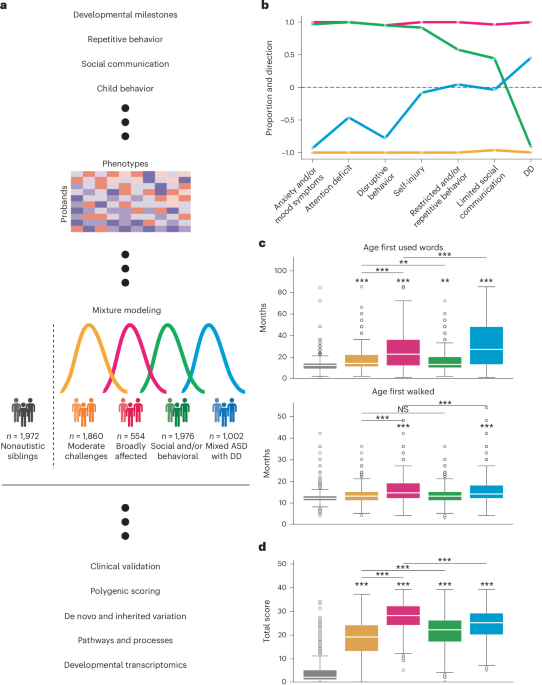Hoopoe
Senior Member (Voting Rights)
Abstract
Unraveling the phenotypic and genetic complexity of autism is extremely challenging yet critical for understanding the biology, inheritance, trajectory and clinical manifestations of the many forms of the condition. Using a generative mixture modeling approach, we leverage broad phenotypic data from a large cohort with matched genetics to identify robust, clinically relevant classes of autism and their patterns of core, associated and co-occurring traits, which we further validate and replicate in an independent cohort. We demonstrate that phenotypic and clinical outcomes correspond to genetic and molecular programs of common, de novo and inherited variation and further characterize distinct pathways disrupted by the sets of mutations in each class. Remarkably, we discover that class-specific differences in the developmental timing of affected genes align with clinical outcome differences. These analyses demonstrate the phenotypic complexity of children with autism, identify genetic programs underlying their heterogeneity, and suggest specific biological dysregulation patterns and mechanistic hypotheses.
Decomposition of phenotypic heterogeneity in autism reveals underlying genetic programs - Nature Genetics
Classes of autism are uncovered with a generative mixture modeling approach leveraging matched phenotypic and genetic data from a large cohort, revealing different genetic programs underlying their phenotypic and clinical traits.
This seems potentially relevant to ME/CFS because they also found that in a portion of people with autism the genetic predisposition comes into play at certain stage of development. In ME/CFS we may find something similar with genetic risk factors becoming relevant during adolescence. The relevant genes could be related to brain maturation at this stage, or sex hormones.
Last edited:
